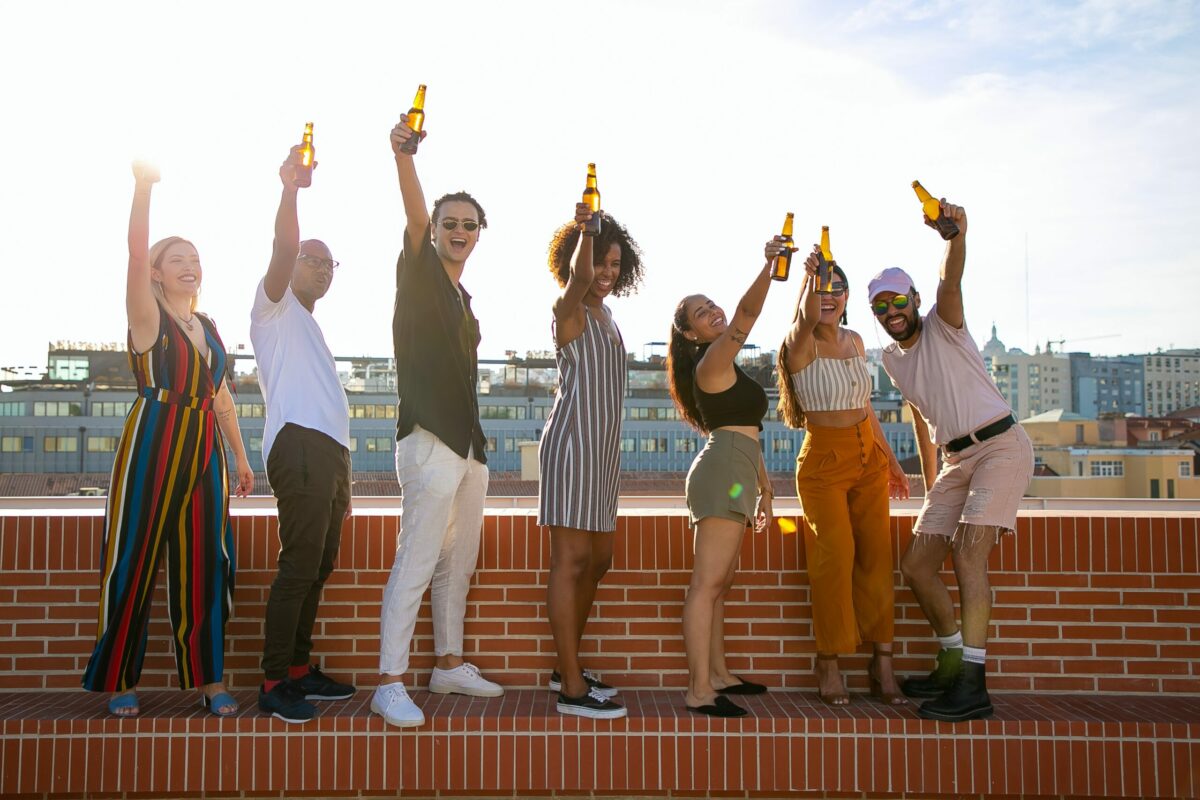Over the years, studies have shown an overwhelming increase in alcohol and substance use among middle-aged and older Americans. But fewer younger adults are choosing alcohol and are more likely to partake in cannabis use. Why?
A new study from the University of Michigan’s Monitoring the Future panel illustrates just how much binge drinking has become a lifestyle for middle-aged adults, as well as using marijuana or consuming hallucinogens. What’s more, after tracking substance use among about 28,500 adults across the country between 19 and 60 years old, the data reveals historic highs, CNN reported.
Dr. Nora Volkow, director of the National Institute on Drug Abuse, the organization that funded the survey, said in a press release that “understanding these trends is a first step, and it is crucial that research continues to illuminate how substance use and related health impacts may change over time.”
Rising binge drinking rates aren’t a new phenomenon
Researchers found that nearly 30% of participants of adults between 35 and 50 reported binge drinking, reaching higher levels than ever before. The data signifies just how consistent the rise in rates has been since 2012. According to the 2021 National Survey on Drug Use and Health (NSDUH), about 60 million, or 21.5%, of people in the United States ages 12 and older reported binge drinking.
It’s even on the rise among adults ages 65 and older more than 11.4% of adults ages 65 and older reported binge drinking in the past month. The National Institute on Alcohol Abuse and Alcoholism (NIAAA) defines binge drinking as a “pattern of drinking alcohol that brings blood alcohol concentration (BAC) to 0.08%—or 0.08 grams of alcohol per deciliter—or more.”
In other words, this typically occurs when a person has five or more drinks within a two-hour window.
Marijuana and hallucinogen use reported at meteoric levels
The 2022 survey results uncovered that more people were using marijuana daily than ever before, nearly doubling from 2012. Around 44% of adults under 30 are willing participants, which is a spike from 28% just ten years ago. On the other hand, in 2022, 28% of adults ages 35 to 50 used marijuana in 2022, an increase of 17% from five years ago.
Dr. Joseph Palamar, an associate professor and substance use expert in the Department of Population Health at NYU Langone, told CNN “it looks like we’re reaching a point in which parents and grandparents are almost as likely to smoke weed as the kids.”
According to the study, middle-aged adults also used hallucinogens such as LSD, MDMA, peyote, and psilocybin at record rates. Less than 1% used hallucinogens, compared with 4% in 2022. Meanwhile, 8% of young adults are users.
Shifting attitudes between younger adults and older adults
In October 2022, the Pew Research Center survey found that 88% of American adults said either that marijuana should be legal for medical and recreational use (59%) or that it should be legal for medical use only (30%). Meanwhile, one in ten reported that the drug should not be legal in any form. These views have held steady since 2021.
Two reasons were cited as important: “marijuana’s perceived medical benefits (86%) and the idea that legalizing the drug would free up law enforcement to focus on other types of crime (70%).” And the “majority of Black adults (68%) and White adults (60%) say marijuana should be legal for medical and recreational use, compared with smaller shares of Hispanic (49%) and Asian Americans (48%).”
Why the uptick among older Americans?
According to a 2023 Gallup analysis, more and more young adults are particularly concerned that “moderate drinking is unhealthy.” Fifty-two percent now hold this belief, which is a considerable upsurge from 34% five years ago. In comparison, there was a 13% increase in those 55 and older who agreed. This data sheds lights on the generational changes behind the uptick.
For example, Gallup found that baby boomers “(those born between 1946 and 1964) have consistently been more likely to drink alcohol than the Silent Generation (born before 1946).”
Additionally, baby boomers’ drinking consumption stands steady at nearly 65%. This occurs as “they replace the Silent Generation as America’s oldest age group, the drinking rate among older adults has increased.”
RELATED CONTENT: Wendy Williams Was At Death’s Door Due To Alcohol Addiction Before Friends Intervened
